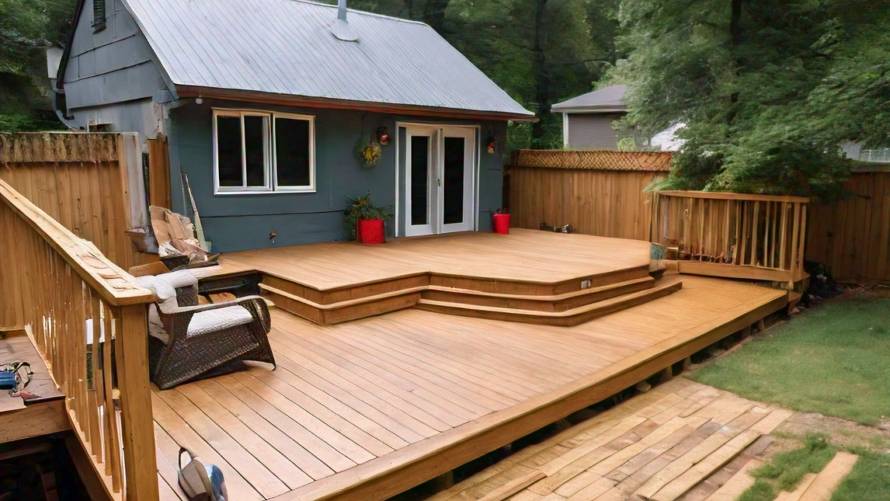A team of researchers has designed a new composite decking material that actually stores more carbon dioxide (CO2) than is required to manufacture it, making it a “carbon-negative” option that could help reduce the environmental impact of building construction.
The new decking, which meets building codes and is less expensive than standard composite decking, could be available at building supply retailers as early as next summer.
Buildings and the production of materials used in their construction are responsible for a significant amount of CO2 emissions, contributing to global warming and climate change. The World Green Building Council reports that materials and processes involved in constructing buildings account for 11% of all energy-related carbon emissions.
David Heldebrant, an organic chemist and one of the project’s principal investigators, says, “Apart from a few types of cement, carbon-negative composites are scarce. The composite decking his team has developed “is one of the first composite materials to be demonstrably CO2 negative over its life cycle.”
The researchers used a classic chemical reaction to form a new chemical bond between CO2 and a functional group called a phenol, which is abundant in wood products like coal and lignin. After undergoing the reaction, the lignin and coal particles contained 2–5% CO2 by weight. These particles were then mixed with high-density polyethylene (HDPE) to form brownish-black composites that look and feel similar to standard wood composites found in decking or lawn furniture.
The new composite boards offer a substantial price and sustainability advantage, being 18% cheaper than standard decking composite boards and storing more CO2 than is released during their manufacture and lifetime. If all the decking sold in the U.S. every year were replaced with the researchers’ CO2-negative composite decking, Heldebrant says, 250,000 tons of CO2 could be sequestered annually, which is equivalent to the yearly emissions from 54,000 cars.
The team plans to make additional composite formulations, test their properties, and envision that carbon-negative composites could be developed for a range of building materials, such as fencing and siding. They are also working to commercialize the decking boards.
If our reporting has informed or inspired you, please consider making a donation. Every contribution, no matter the size, empowers us to continue delivering accurate, engaging, and trustworthy science and medical news. Independent journalism requires time, effort, and resources—your support ensures we can keep uncovering the stories that matter most to you.
Join us in making knowledge accessible and impactful. Thank you for standing with us!

